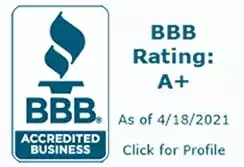Don’t Screw This Up When Building or Remodeling Your Home
The biggest mistake people make when building or remodeling a home is waiting to lock their mortgage rate until they are almost done with construction. A quick jump in rates will leave you with thousands more in loan fees, paying tens of thousands more in interest, causing yourself serious financial trouble, or could even keep you from buying your new home. Most people don’t even realize they are taking this unnecessary and easily avoidable risk. Protect your family with a simple plan and use these insider secrets to even lower your rate at closing.
While building a home takes several months, most lenders do not offer rate locks over 60 days. Worse, they do not explain the risk or tell you about other options in fear of losing your business. Locking your rate is not even an option even though rates can easily move 1% or more in only 30 days.
Risks of not locking your loan: • Higher Fees – The cost to lower your interest rate just 1.0% because you did not lock in time can be 2%-4% of the loan amount. That works out to $6,000 to $12,000 on a $300,000 loan. • Higher Rates – With a higher rate, you will pay thousands more in interest. In just 7 years, paying 1.0% more on a 30 year fixed loan of $300,000 is about $21,000 in extra interest. • Can’t Afford It – Your loan payment may be more than you can afford requiring you to make drastic changes in your lifestyle or retirement, charitable, or family care giving plans. • Not Qualifying – You may not even qualify for the loan to buy your new home. Putting more money down by raiding savings may get you the loan, but could jeopardize your retirement. • Changing Rules – Loan rules change frequently and can keep you from getting a loan. When you lock your loan, you also fix the rules and requirements to get it.
Eliminate risk with a simple lock plan. Just follow these simple steps. 1. Choose a Lender – Find a great lender with options for long-term locks from 90 to 360 days. 2. Include a Cushion – Add 20% to your construction time for your lock expiration date. 3. Mark Your Calendar – Work back from that date marking 90, 120, 180, 240, and 360 days. 4. Make Your Plan – Lock your loan. Be very careful waiting. Rates can move quickly. 5. Calculate Your Trigger Rate – If you wait, this is the rate where you lock no matter what because you need it to qualify for the loan or for your budget.
Insider Lock Secrets • Make sure you know the rules and costs for lock extensions and float downs before you lock. • You may get a lower rate with a shorter lock period and a lock extension. • A small change in rates will usually cost far more than the long-term rate lock. • If rates go down, you can lower your rate before closing if you know the rules.
People assume way too much risk by not locking their loans right away. Make a plan and lock your loan. Even if you are sure rates won’t go up, just lock. You can always float your rate down if they don’t.












